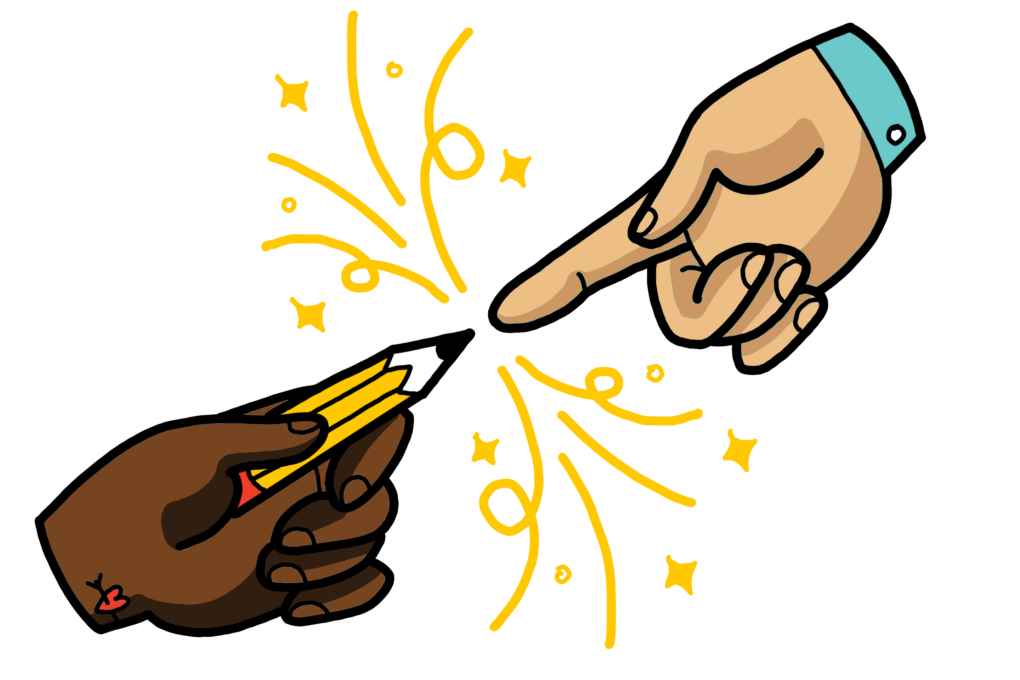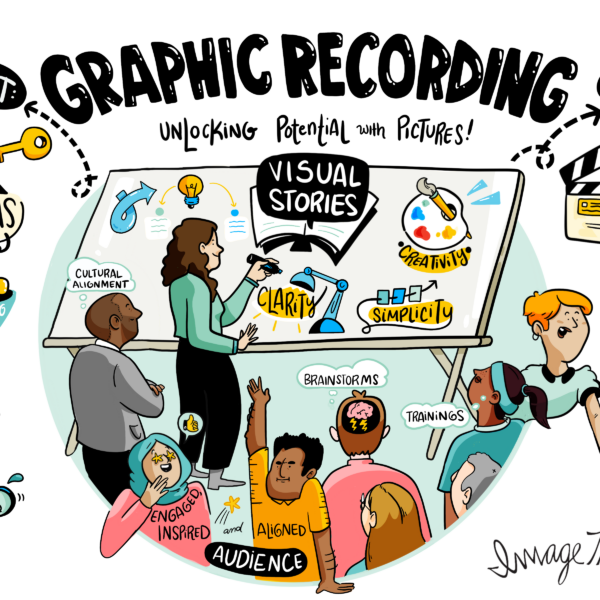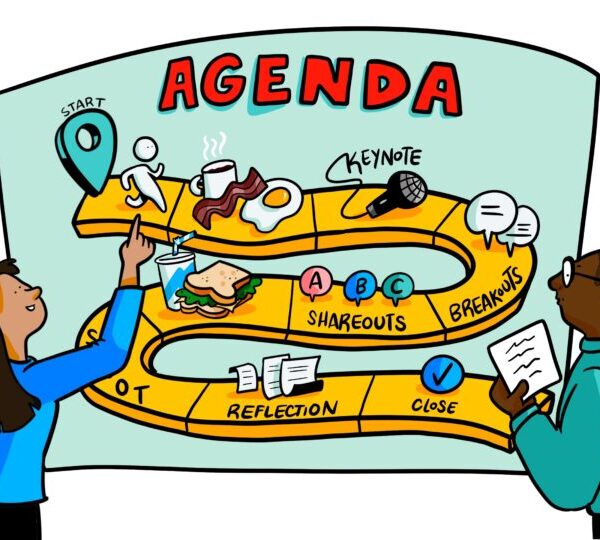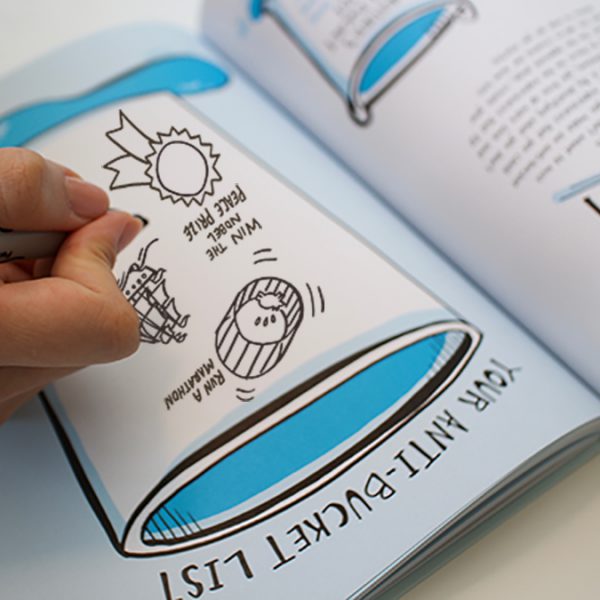Even with more channels for people to connect than ever before, effective communication remains a challenge. Language differences, cultural nuances, and accessibility barriers can often hinder understanding and collaboration. But there’s a universal language that transcends these obstacles: visual communication.
At ImageThink, we’ve seen how visuals can bridge gaps, foster inclusivity, and create shared understanding. Let’s explore how visual communication breaks down barriers and brings people together.
The Universal Language of Visuals
In-person graphic facilitation is the classic format, where a facilitator captures ideas live on large-scale paper or Visuals are inherently inclusive. Unlike spoken or written language, which can be limiting, visuals tap into our shared human ability to process images. A well-crafted diagram, icon, or illustration can convey complex ideas instantly, regardless of the viewer’s native language or cultural background.
For example, a simple flowchart can explain a process to a global team without the need for translation. A thoughtfully designed infographic can make data accessible to people with varying levels of expertise. This universality makes visual communication a powerful tool for inclusivity.

Overcoming Language Barriers
Hybrid graphic facilitation blends in-person and virtual elements, catering to teams that are partially remote and Language differences can create misunderstandings and slow down collaboration. Visual communication cuts through this by providing a common reference point. Whether it’s a sketch, a chart, or a graphic recording, visuals allow people to “see” what’s being discussed, reducing the reliance on words.
In multicultural settings, visuals ensure that everyone is on the same page, fostering clearer communication and stronger teamwork.
We saw the power of this first hand when ImageThink’s graphic recordings were displayed for 8000 members of the UN during the 59th session of the Commission on the Status of Women (CSW) at the United Nations in the main lobby of the United Nations Secretariat Building. After being displayed for two weeks during an international gathering approximately 8000 women, young women, and girls from around the world.
Bridging Cultural Differences
Cultural contexts can shape how we interpret words and ideas. Visuals, however, often carry meanings that are more universally understood.
Beyond simple symbols, thoughtfully designed visuals can help navigate complex cultural nuances—whether in business negotiations, healthcare messaging, or educational outreach. By prioritizing culturally neutral or adaptable imagery, organizations can ensure their messages resonate broadly, avoiding unintended biases or misunderstandings. For example, in global marketing campaigns, brands that employ universally understood metaphors—like a winding road for progress or a handshake for partnership—can connect with audiences more effectively.
Enhancing Accessibility
Visual communication is also a game-changer for accessibility. For individuals with hearing impairments, visuals provide an alternative to spoken language. For those with cognitive or learning differences, visuals can simplify complex information and make it easier to process.
Tools like color contrast, clear typography, and intuitive layouts ensure that visuals are accessible to people with visual impairments or other disabilities. By prioritizing accessibility in visual design, we create content that truly includes everyone.
How to Harness the Power of Visuals
- Use Icons and Symbols: Simple, universally recognized visuals can convey ideas quickly and clearly.
- Create Visual Narratives: Use diagrams, timelines, or storyboards to guide your audience through complex information.
- Design for Accessibility: Ensure your visuals are clear, high-contrast, and easy to interpret for all audiences.
- Encourage Collaboration: Use graphic facilitation or live sketching to engage teams and create shared understanding in real-time.
The Inclusive Future of Communication
ImageThink is here to help you navigate this evolving landscape and harness the power of graphic facilitation to drive collaboration and innovation.
Discover how we can bring your ideas to life at imagethink.net.




